Schwarzwaldstube was opened in 1976, just across the road from the venerable Traube Tonbach hotel, which owns the restaurant. It is the most famous restaurant in Germany, gaining a Michelin star in 1978, a second star in 1979, and the ultimate third star in 1992. For much of its modern history its head chef was Harald Wohlfhart, who took over as head chef in 1990, after working for three years here as sous chef. He trained with Eckart Witzigmann in Munich (the first restaurant in Germany to gain 3 stars) and Alain Chapel in Mionnay near Lyon. Mr Wohlfhart stepped down in mid 2017, and the kitchen reins were handed over to long time sous chef Torsten Michel from Dresden, sous chef since 2007, and who started working here in 2004. The kitchen is famous for being the training ground for a veritable army of talented young chefs, thirty of whom have gone only to earn Michelin stars elsewhere. These include Kevin Fehling, Christian Bau and Thomas Buhner, all with three stars of their own. The name of the restaurant reflects the location. “Schwarzwald” is Black Forest, and ”stube” seems to have no direct one word English translation but means a cosy place or room.
The dining room is in a rustic wooden building, and has a lovely view out over the gorgeous Black Forest valley below. Tables have crisply ironed tablecloths, and are large and well spaced. There is a full a la carte menu, tasting menus priced at €180 and €225 and a vegetarian version at €165, with the restaurant very flexible about swapping dishes between these menus within reason. The extensive wine list had considerable depth in German and French labels, and had references such as Karl Johner Grauer Burgunder Trocken 2016 from Baden at €40 for a bottle that you can find in the high street for €14, J.J. Prum Graacher Himmelreich Spatlese 2004 at €89 compared to its retail price of €35, and the stunning Keller Brunnenhauschen Abtserde Grosse Gewachs 2011 at a very kindly €198 for a wine that will set you back €305 in the shops. Further up the list you will find Leflaive Les Pucelles Puligny Montrachet 2007 at €242 compared to its retail price of €278, Marc Colin Batard Montrachet 2010 at €680 for a bottle that will set you back €386 in a shop, and Guigal La Turque 1999 at €820 for a wine whose current market value is €712. Visiting oligarchs would be surprised to see Chateau Petrus 2000 at a mere €4,300 given that its current retail price is €5,485. There was just one Egon Muller wine listed, but otherwise this was an impressive list in terms of depth, with pearls of value hidden away like jewels.
The meal today started with some nibbles. There was a little crisp with crab tartare, crustacean jelly and passion fruit foam, a curry cracker with marinated and flamed wild Scottish salmon along with avocado and shallot cream, pulpo croustillant with confit octopus, tarragon foam and saffron cream on a squid ink crisp, and finally “topinky”, a German snack that usually has fried bread and perhaps garlic butter, but here had a topping of duck liver with apple. These were high class nibbles, especially the topinky with its gloriously rich duck liver, and the lovely salmon that really tasted like salmon, which is almost a forgotten memory given how rarely I encounter wild salmon these days (19/20). The next dish was even better: chilled tomato bouillon with sorbet of dried tomatoes, apple, couscous and celery along with basil cream. I can hardly describe the intensity of flavour of the tomato sorbet, which had extraordinary depth, and went beautifully with the basil and apple (20/20). Bread was supplied by a local baker in Baiersbronn, along with baguette from a baker called Pain et Tradition in Ebersheim in Alsace. The cereal and seed rolls were impressive, and even better was fabulous ciabiatta with olives that was remarkably light in texture.
The first formal dish of the menu happened to be the least good. Line caught yellowfin tuna from Spain was cooked “cuit a point” (rare) and served with grilled fennel, spiced tomatoes, marinated red pepper, bonito flakes and chilli. The spiced tomatoes and fennel were nice and the tuna itself was fine, but personally I am never sure that cooked tuna is ever better than raw, and more to the point here the dish seemed to me to sit oddly on the menu. Here we are in the heart of the Black Forest in a classical French restaurant, and this vaguely Asian influenced dish seemed somehow out of place. Objectively it was perfectly pleasant, but far from dazzling, perhaps 16/20 if I am kind.
Things got back on track with poached Gillardeau oysters with imperial caviar and champagne sauce, the oysters excellent and the sauce in particular superbly made; perhaps the quality of the caviar could be upgraded to Beluga but this was still very good (18/20). Even better was roasted Scottish langoustine tail with glazed asparagus tips, white asparagus, tiny young peas from Baden and a soup of asparagus and the coral of the langoustine. The shellfish was perfectly cooked and the asparagus was magnificent, yet perhaps best of all were the humble peas, which had fabulous flavour. This was a terrific dish, making the most of really high grade ingredients (20/20).
Red mullet from Brittany came with artichoke crisps, pan-fried artichoke heart, red bell pepper nage and, in a separate little bowl, an emulsion of red mullet liver, sherry vinegar and basil espuma. The fish was gorgeous, flawlessly cooked, the earthy artichokes going really with the mullet, the red pepper nage lovely. The little side dish of basil espuma with the mullet liver and vinegar was extraordinarily good, the basil having great intensity of flavour and the liver adding an element of richness but perfectly balanced by the sourness of the vinegar. This was a top class dish, displaying great technique and balance, all again based on superb ingredients (20/20).
Next was fried sweetbread with a Parmesan crust, along with steamed spinach, potato tuile, a wild herb salad and a veal sauce made using calves head and black truffle. This was another stunner, the delicate creamy texture of the calf sweetbread contrasting with the crisp potato, the richness balanced by the spinach and the salad. Incidentally, the spinach was dazzling, and there are two words that you do not usually see in the same sentence. The sauce was terrific, deeply flavoured and lifted to a higher level by the aromatic truffle. Simply glorious (20/20).
Medallion and braised shoulder of local deer was served with turnips and pepper jus flavoured with Bourbon Pointu, a rare coffee from Reunion. The deer was topped with a pepper crust that included very precise use of Sichuan pepper, which had its characteristic numbing quality without overwhelming everything else. The venison had superb flavour and the use of the pepper was a masterstroke, as it successfully balanced the richness of the meat and jus (between 19/20 and 20/20).
A final little savoury course was lamb royale (a variant of the traditional hare royale dish of classical French cooking), a remarkably rich dish whose sauce rouenaisse involves Bordelaise sauce, itself based on a demi glacé reduction with bone marrow and red wine, with the addition of duck liver. This came with cherry jelly, whose acidity cut cleanly through the gloriously rich meat - a carnivorous delight with the sauce a complete triumph (20/20).
For dessert, glazed cherries had been pitted and replaced with a hazelnut core, served in a tart with chocolate cremeux, pistachio almond cream and cinnamon sable, cherry soup and cherry granita. The granita had lovely flavour and texture, and the hazelnut core to the cherries was a clever idea, the combination of chocolate and cherry flavours a well established classic. For me the cinnamon flavour was just a touch strong, but this was certainly a fine dish (18/20). I preferred a tropical fruit dessert involving passion fruit, mango, espuma of coconut with kaffir lime, marinated pineapple, jelly of mango and pineapple and a little apple blossom. This was a lovely, refreshing dish involving many contrasting textures and was precisely balanced between sweetness and sharpness (19/20).
Service was superb, our waiter having the seemingly effortless charm and attentiveness that you find in waiters in really top class European restaurants. The sommelier was excellent, doing a good job of helping us navigate around the huge list. The bill came to €625 (£546) per person, of which the food element was €253 per person, the bulk (€372 each) of the bill being accounted for by some superb wine. If you ordered the a la carte and shared a modest bottle of Riesling then a realistic all-in cost per head would be about €210 (£184). This is less than half what you would pay in a top Paris restaurant yet the food here is every bit as good as the pinnacle of Paris dining, with the bonus of the fabulous view and the generally kindly priced wine list. The tuna dish aside, this was a really superb meal, and actually better than any of my previous meals here. The quality of the sauces was a consistent feature, something that is almost a dying art these days. The kitchen is clearly now in very safe hands indeed, and Schwarzwaldstube is definitely a world-class restaurant by any standard.
Further reviews: 13th Jun 2014 | 01st Jul 2003






















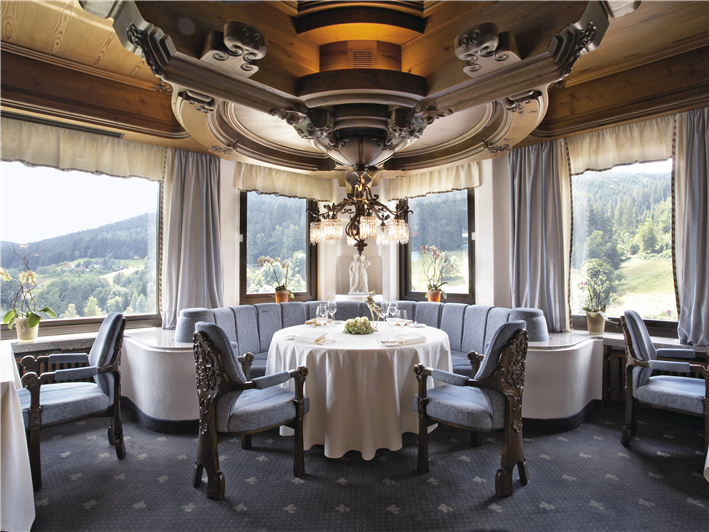

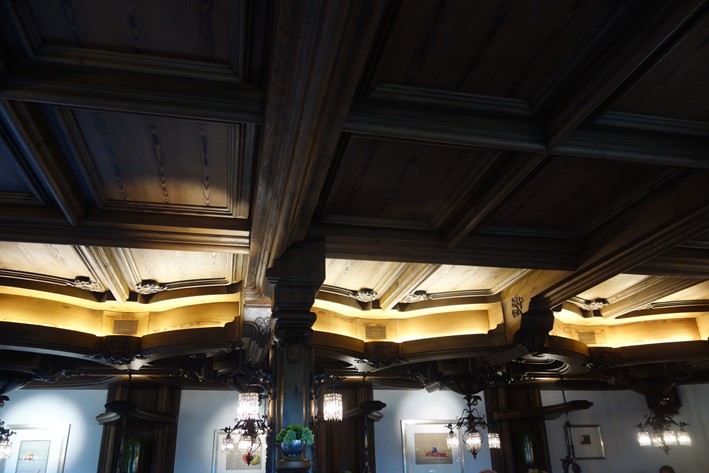
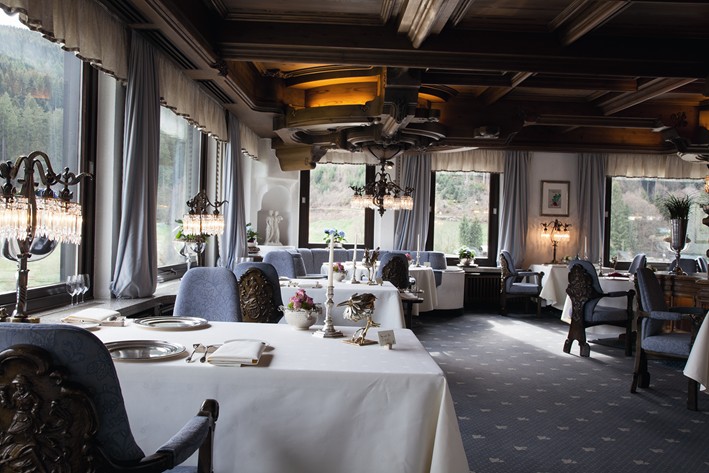


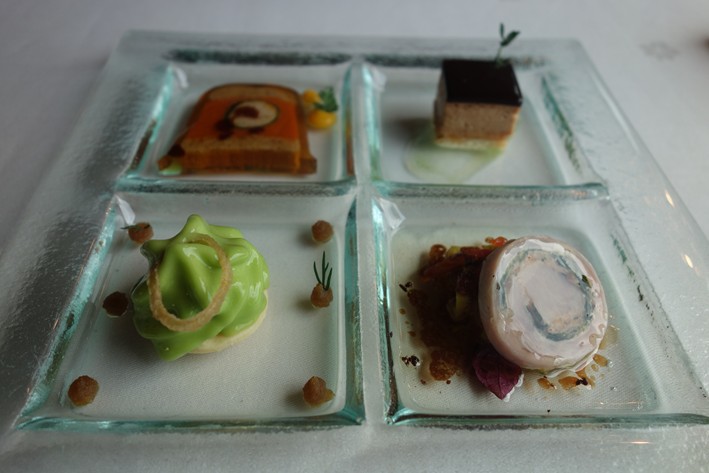


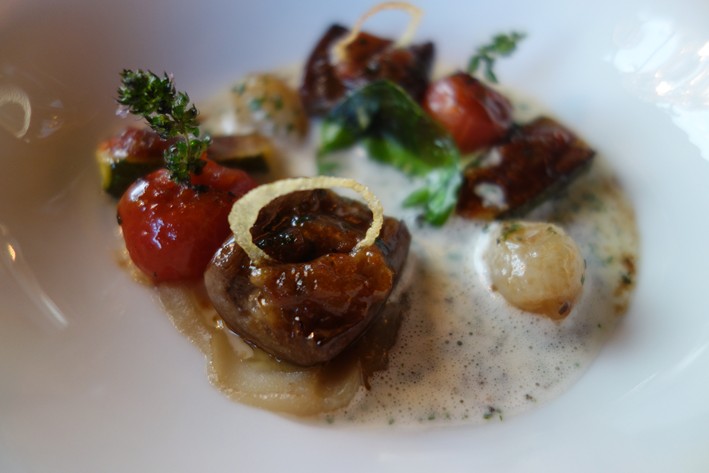
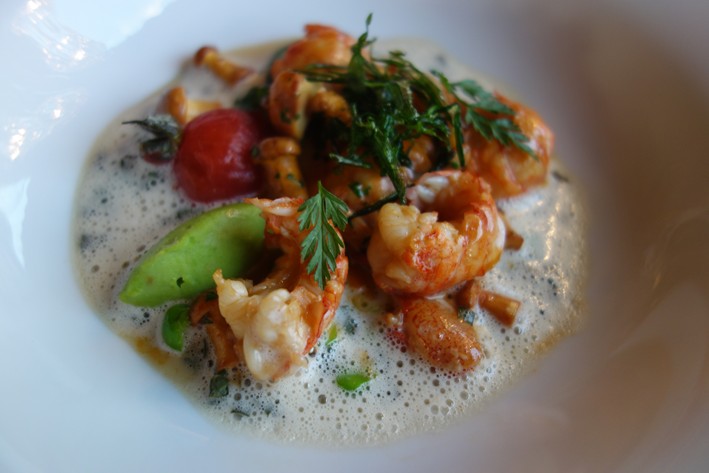

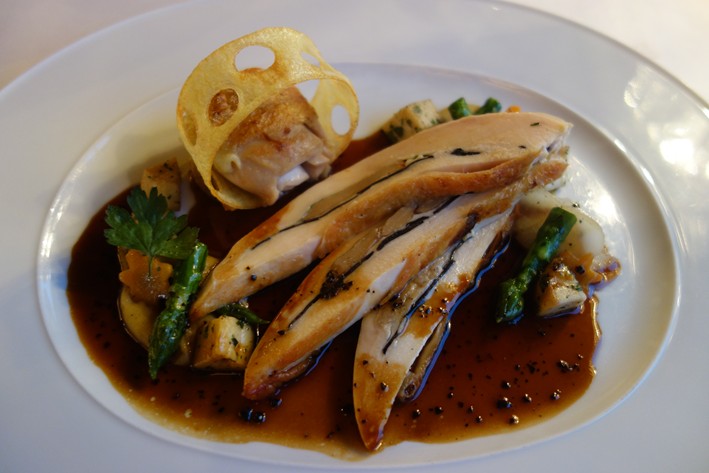
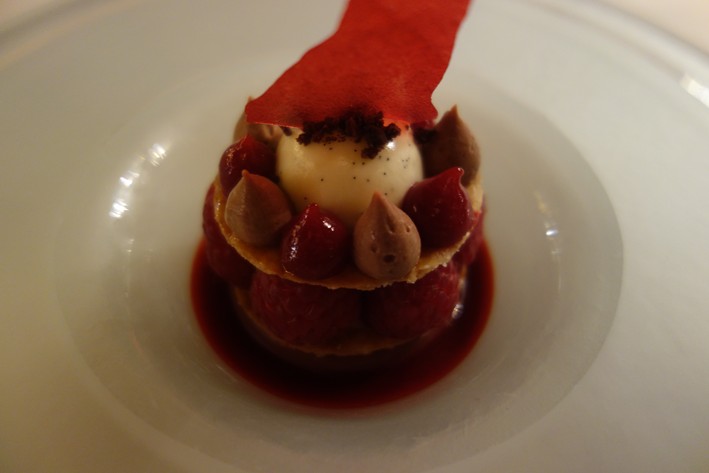
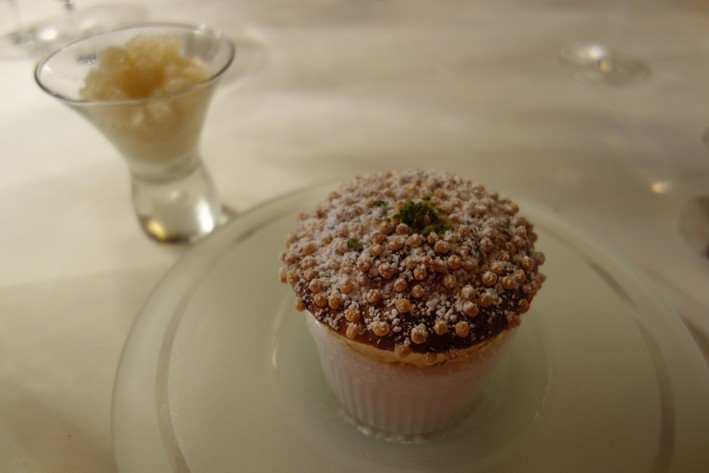
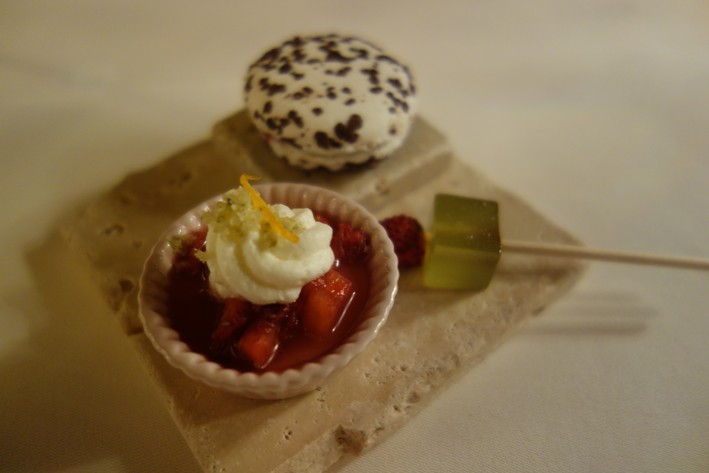
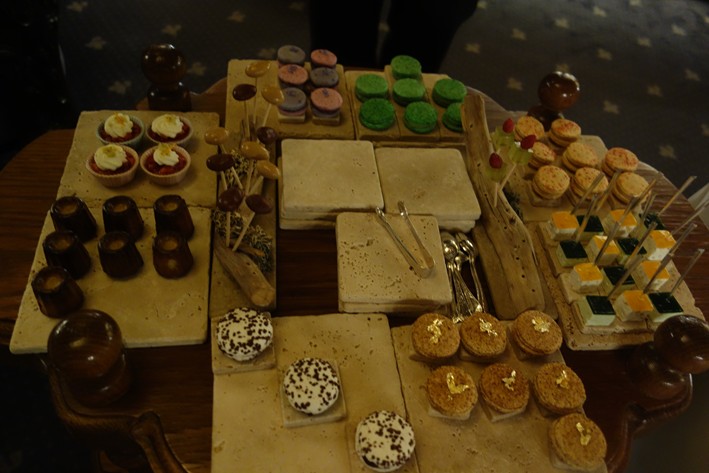

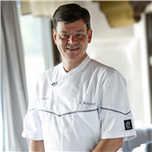
Ian Goldstein
Your photographs of this stunning cooking has made me salivate this fine sunny London morning!